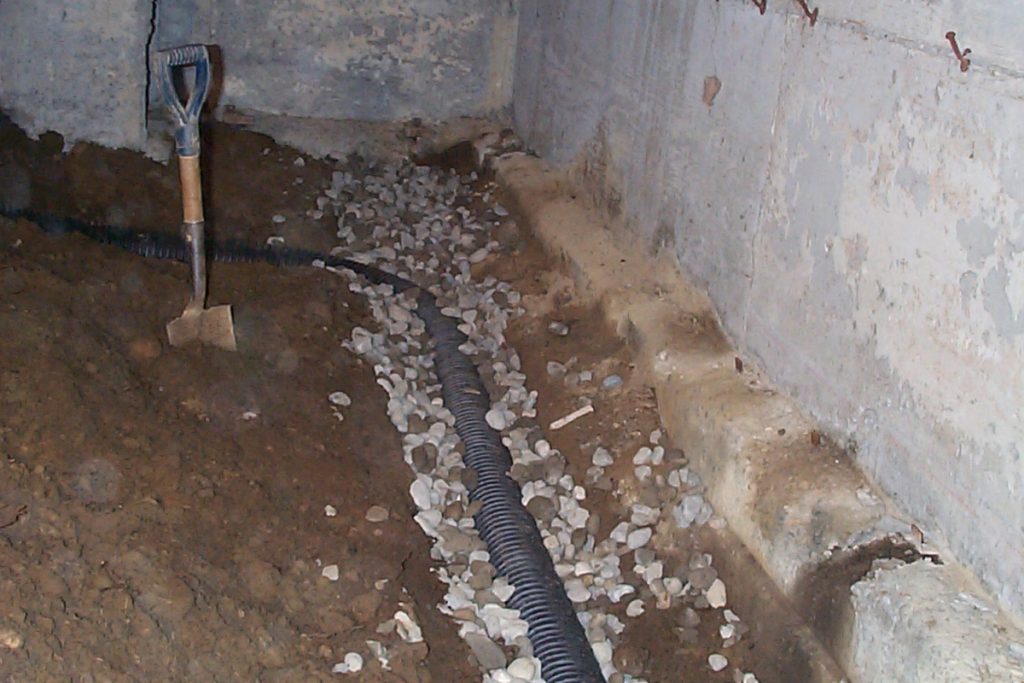Many homeowners with leaky basements automatically assume that their weeping tile system is responsible for their basement leaks and that the weeping tile should therefore be replaced. Before arriving at this conclusion it is important to understand why weeping tile is installed around the footing of your home as well as the role it plays in keeping your basement dry.
What Does a Weeping Tile System Do?
A weeping tile system is a drainage system installed around the footing of a building at the base of the foundation walls. The purpose of this drainage system is to carry away ground water that tends to accumulate along the footing. Depicted below are graphical and pictorial views of installed weeping tile.
How a Weeping Tile System is Installed
The illustration above and the picture clearly show that a weeping tile system follows the footing around the home and forms a continuous circuit. The reason for installing the weeping tile in this location and at this depth is due to the fact that the footing is the lowest point of the structure at which it is possible to collect and drain the water that has pooled at the base of the foundation.
Note: This blog deals primarily with current weeping tile systems and not the terra cotta tile systems commonly in use until the late 1970’s.
The first picture below shows how the weeping tile system follows the footing to the inside of the garage of a residential dwelling. The weeping tile is installed inside the garage because those garage walls are considered to be the exterior walls of the home and therefore are the foundation walls that require waterproofing. The image on the right shows the weeping tile system’s connection to the leader line, which is a solid pipe that carries the water from the weeping tile system to the storm sewer underneath the street. In many instances, weeping tile systems are routed to a sump pump installed inside the basement.
Clogged Weeping Tile Systems
A clogged weeping tile system does not necessarily need to be replaced. Depending upon the particular circumstances, it may be possible to flush the accumulated sediment out of the weeping tile system using water under high pressure. The following image shows clay weeping tile, clogged by sediment to varying degrees; these clogged weeping tiles can be flushed clean.
Sometimes weeping tile systems get clogged by tree roots. The image on the left is that of terra cotta (or clay) weeping tile that is full of roots. Roots are commonly found in weeping tile systems because these systems are an excellent source of water for trees. It is possible to grind these roots and therefore avoid replacing the weeping tile system. The image on the right provides an example of the current generation of weeping tile. Because this plastic weeping tile system is not as robust as the older style clay weeping tile, grinding the roots is not a viable option because the grinder will destroy the weeping tile causing more problems than you have.
Wondering if you need to replace the weeping tile around your home? Check out the blog article on weeping tile replacement entitled: “Is it time to replace the weeping tile?”
You may also be interested in our blog article: Basement leak repairs – Pearls of wisdom
